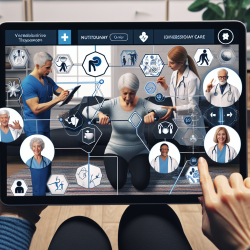Introduction
The COVID-19 pandemic has posed unprecedented challenges to educational institutions worldwide. Understanding the transmission dynamics of SARS-CoV-2 in these settings is crucial for developing effective public health strategies. A study titled Surveillance of SARS-CoV-2 transmission in educational institutions, August to December 2020, Germany provides valuable insights into the transmission risks within schools and daycare centers. This blog will explore the key findings of this research and discuss how practitioners can leverage this information to improve outcomes in educational settings.
Key Findings from the Research
The study conducted in Germany from August to December 2020 assessed the transmission risk of SARS-CoV-2 in educational settings. Here are some critical findings:
- The overall secondary attack rate (SAR) was 1.34%, indicating a low transmission risk in educational settings.
- Transmission was more likely around teacher-index cases compared to student/child-index cases, with an incidence rate ratio (IRR) of 3.17.
- Daycare centers exhibited a higher transmission risk than secondary schools, primarily due to clusters around teacher-index cases.
- Asymptomatic cases had a lower transmission risk compared to symptomatic cases, with an IRR of 0.47.
Implications for Practitioners
Practitioners in educational settings can utilize these findings to enhance safety protocols and minimize transmission risks:
- Focus on Teachers: Given the higher transmission risk associated with teacher-index cases, it is crucial to implement stringent safety measures for teachers, including regular testing and vaccination drives.
- Enhanced Measures in Daycare Centers: With a higher risk of transmission, daycare centers should adopt robust hygiene practices and consider smaller group sizes to reduce potential outbreaks.
- Monitoring Asymptomatic Cases: Although asymptomatic cases pose a lower transmission risk, regular testing and monitoring are essential to prevent unnoticed spread within institutions.
- Targeted Interventions: The variation in transmission risk across different settings and roles suggests the need for tailored interventions rather than a one-size-fits-all approach.
Encouraging Further Research
While this study provides valuable insights, it also highlights the need for ongoing research to adapt to evolving circumstances, such as the emergence of new variants. Practitioners should be encouraged to participate in or support further research initiatives to continually refine safety protocols in educational settings.
Conclusion
The study underscores the importance of data-driven decisions in managing SARS-CoV-2 transmission in educational settings. By understanding the nuances of transmission dynamics, practitioners can implement targeted interventions that enhance safety while maintaining educational continuity. Continuous surveillance and research are vital to inform public health policies and ensure educational justice during the pandemic.
To read the original research paper, please follow this link: Surveillance of SARS-CoV-2 transmission in educational institutions, August to December 2020, Germany.










